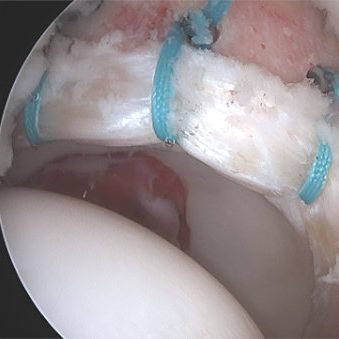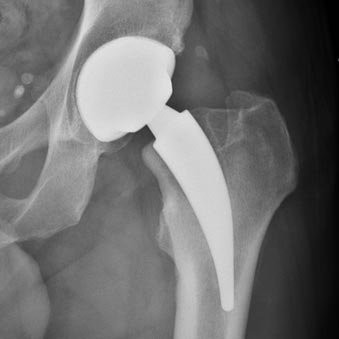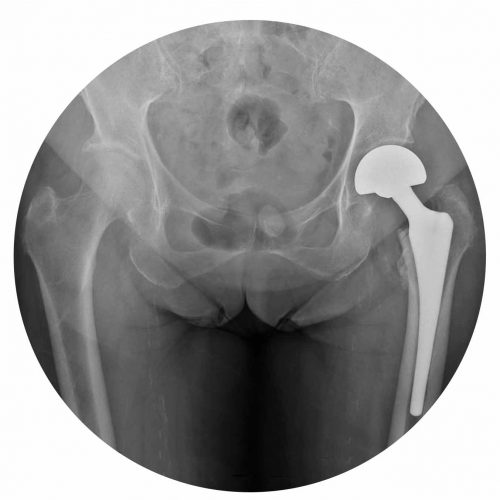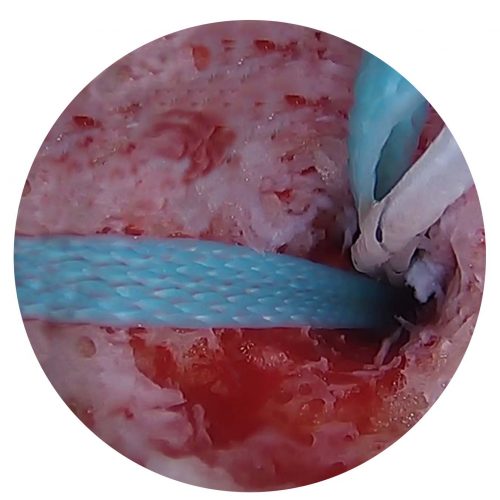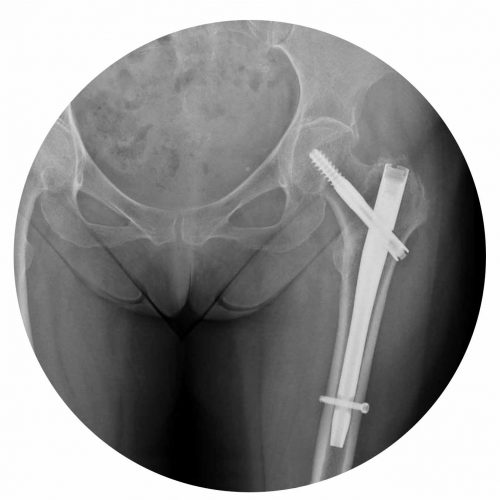Surgical Procedures
Hip Arthroscopy
It is a minimally invasive technique for treating hip joint problems and is done through 3 or 4 (depending on the lesions found) small 1 cm incisions.
Total Hip Arthroplasty via Bikini
The prosthesis is placed through a 6 to 10 cm incision made on the anterior surface of the hip, following the groin crease (bikini line). This treatment is indicated in degenerative joint disease, post-traumatic or secondary to medical and rheumatological diseases.
Hip Resurfacing Arthroplasty (HRA)
This is a surgical option that should be considered in young and active patients with hip arthrosis. It consists of a conservative joint replacement, as it preserves the entire joint structure unlike total hip replacement.
Partial Hip Arthroplasty (PHA)
Partial hip arthroplasty consists of the prosthetic replacement of the upper part of the femur and involves the placement of a stem and a metal head that articulates with the native hip socket (acetabular cavity).
Revision Hip Arthroplasty
A revision hip replacement surgery is performed whenever it is necessary to repair or replace a prosthesis (or part of a prosthesis) that over time has stopped working and/or is causing pain due to: infection, instability, wear and tear, peeling or fracture.
Arthroscopic Tendinous Suture
The hip region has two other “compartments” that can be treated arthroscopically, called “extra-articular compartments”: the trochanteric and gluteal compartments. Arthroscopy has revolutionised the treatment of tendon lesions of both the gluteus medius and the ischiotibia.
Pubalgia Surgery
This surgery is done through a small incision of 3 cm on the inner side of the thigh through which a tenotomy of the long adductor tendon is made. It may be necessary to complement this with surgery similar to surgery to repair an inguinal hernia.
Femoral and Acetabular Osteotomy
Non-prosthetic surgical treatment of hip dysplasia has two objectives: to correct acetabular or femoral dysplasia and to treat the joint lesions resulting from these dysplastic changes and thus improve the biomechanics of the hip to try to prevent the development of secondary arthrosis.
Acetabulum and Pelvic Ring Osteosynthesis
Surgical fixation of this type of fracture is complex, laborious and not without risk due to the proximity of important anatomical structures, so they must be performed by specialists in pelvic and hip trauma. Fixation is done with plates and screws.
Osteosynthesis of Femoral Neck Fractures
Osteosynthesis of femoral neck fractures consists of fixing the fracture with screws or plate and screw system in order to allow subsequent bone healing.

